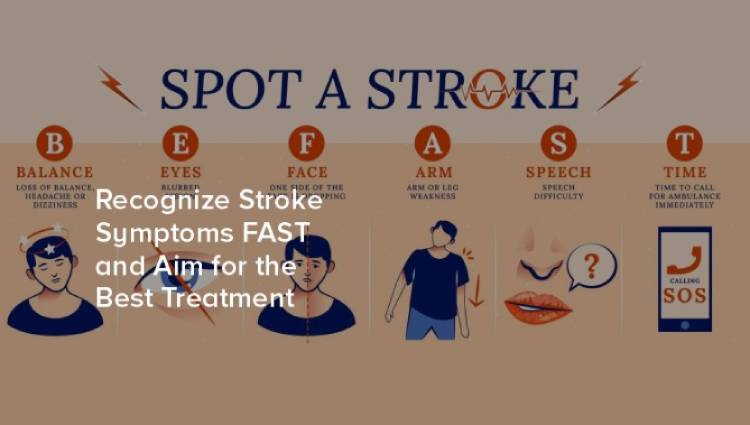
Stroke is a medical emergency that requires rapid treatment to prevent permanent damage or death. The key to the best recovery from a stroke is recognizing the symptoms and seeking help immediately. In fact, every second counts when it comes to treating strokes. By understanding the warning signs, you can help save yourself or a loved one from the devastating effects of stroke.
F – Face drooping:
This is one of the most noticeable symptoms of a stroke. If one side of the face droops or feels numb, it could be a sign of a stroke. Ask the person to smile and see if one side of their mouth droops.
A – Arm weakness:
If you or someone you know experiences sudden arm weakness or numbness, they could be having a stroke. This is because a stroke typically affects one side of the body, including the arms.
S – Speech difficulty:
If you hear slurred or garbled speech from someone, it could be a sign of stroke. Ask the person to repeat a sentence and see if they are able to speak clearly.
T – Time to call for help:
If the above symptoms are present, call for emergency help right away. Time is of the essence when dealing with a stroke, and rapid treatment can help reduce the risk of permanent damage or death.
Another important symptom to be aware of is sudden confusion or trouble understanding. If a person suddenly has trouble understanding what you're saying or has difficulty speaking, it could be a sign of a stroke. Additionally, sudden numbness or weakness on one side of the body, sudden trouble seeing in one or both eyes, sudden dizziness or loss of balance, and severe headache with no known cause are all warning signs of a stroke.
If someone exhibits any of these symptoms, it's crucial to call for help as soon as possible. Emergency medical personnel will assess the severity of the stroke and determine the best course of treatment. The faster they're able to start treatment, the better the chances of a successful recovery.
Treatment for a stroke typically involves medication or surgery, depending on the type and severity of the stroke. For example, clot-busting drugs may be used to dissolve a blood clot that's causing the stroke of patient reaches the hospital with 41/2 hrs. of onset of symptoms. Surgery may be required to remove a clot or repair a damaged blood vessel.
In addition to immediate medical treatment, stroke recovery may also involve rehabilitation. This can include physical, occupational, and speech therapy to help regain function and strength. The length of recovery time varies depending on the severity of the stroke, but early treatment and rehabilitation can greatly improve the chances of a successful recovery.
Conclusion
By recognizing stroke symptoms FAST and calling for emergency help, you can help save yourself or a loved one from the devastating effects of stroke. Remember the FAST acronym: Face drooping, Arm weakness, Speech difficulty, Time to call for help. Time is of the essence when it comes to treating strokes, so don't hesitate to call for emergency help if you suspect a stroke. With rapid treatment, rehabilitation, and ongoing care, stroke recovery is possible.